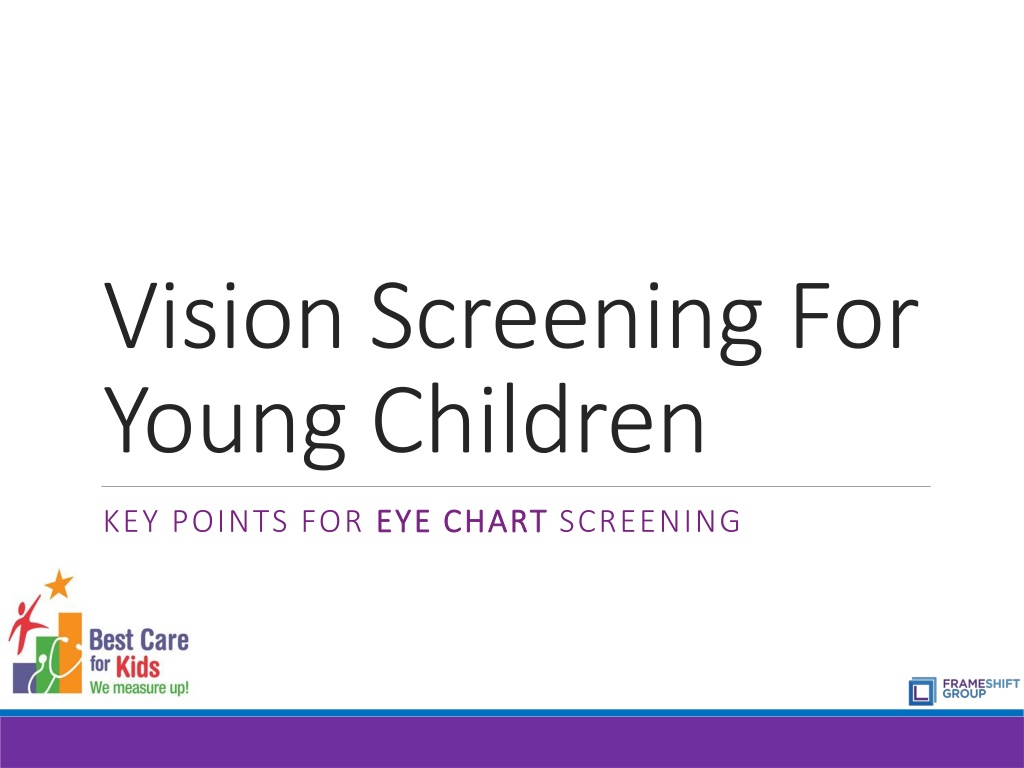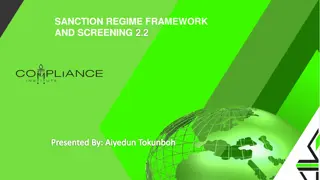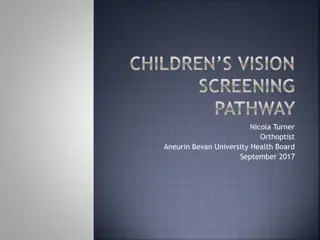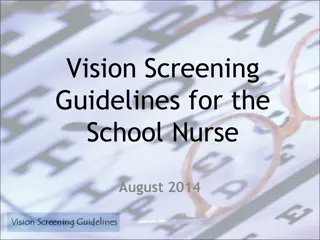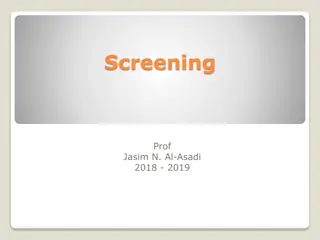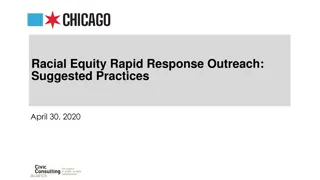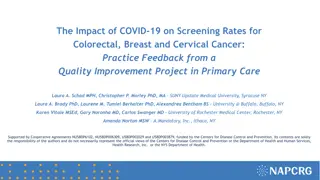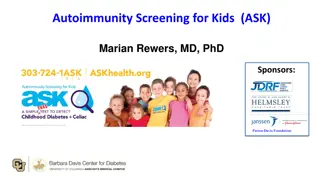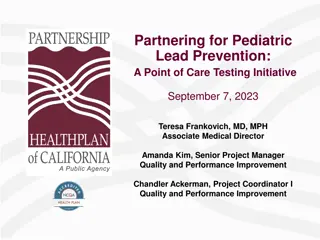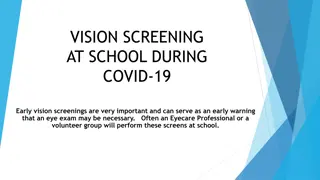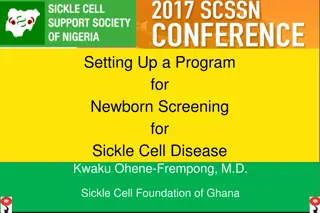Importance of Vision Screening for Young Children
Understanding the critical development of vision in young children is crucial, as vision conditions can go undetected but have significant impacts. Early screening helps in identifying refractive errors, amblyopia, and strabismus for successful treatment. Prevalence statistics highlight the importance of timely screening, as it can detect issues that may not be obvious. Distinguishing between screening and diagnosis is essential, with the former identifying risks and the latter providing a specific condition and treatment plan. Furthermore, explaining vision acuity like 20/20 and the significance in determining visual capabilities adds to the comprehensive understanding of vision screening in children.
Download Presentation

Please find below an Image/Link to download the presentation.
The content on the website is provided AS IS for your information and personal use only. It may not be sold, licensed, or shared on other websites without obtaining consent from the author. Download presentation by click this link. If you encounter any issues during the download, it is possible that the publisher has removed the file from their server.
E N D
Presentation Transcript
Vision Screening For Young Children KEY POINTS FOR EYE CHART EYE CHART SCREENING
Objectives By the end of the training participants will be able to: 1. Understand the importance of vision screening 2. Identify the tools needed for vision screening 3. Identify the steps of vision screening PLEASE NOTE this presentation does not replace a full vision screening training class. 2 9/9/2024
Development of Vision The visual pathway from the eye to the brain is still developing from birth to about age 9 this is the critical time period to detect vision conditions The brain needs input from the eye in order to develop normally during this period 3 9/9/2024
Why Screen Early diagnosis of : Refractive errors (near-sightedness, far-sightedness) Amblyopia (lazy-eye) Strabismus (crossed-eyes) Early diagnosis is the key to successful treatment! 4 9/9/2024
Why Screen Vision problems go undetected because Young children may not realize they cannot see properly Many eye problems do not cause pain, therefore a child may not complain of discomfort Many eye problems may not be obvious, especially among young children The screening procedure may not have been performed properly! 5 9/9/2024
Prevalence of Vision Disorders in Children 1 in 20 preschool-age children have vision problems 1 in 4 school-age children have vision problems 2-3% of children have Amblyopia (Lazy-eye) 2-5% of children have Strabismus (crossed-eyes) 6 9/9/2024
Screening vs. Diagnosis Screening identifies children at risk for certain eye conditions or in need of a professional exam. A screening can detect signs of a vision disorder in an early, treatable stage but it does not provide a diagnosis. Diagnosis identifies the eye condition and the appropriate treatment can be prescribed. 7 9/9/2024
What does 20/20 mean? The person can see from 20 feet what a person with normal vision can see from 20 feet 20/40 vision means the person can see from 20 feet what a person with normal vision would see from 40 feet 8 9/9/2024
Vision screening provided by the medical staff Clinical screening for eye conditions happens in the physical exam Screening for visual acuity should start at age 3 The child should be screened at every well-child visit using a standardized eye chart or automated screener 9 9/9/2024
Procedure for Vision Screening in 3-5 year olds Acceptable optotypes to be used when vision screening 3-5 year olds are: LEA symbols HOTV symbols Unacceptable eye charts: Snellen charts, Allen figures, Tumbling E, Landolt C, Lighthouse, Kindergarten Eye Chart
Procedure for Vision Screening in 3-5 year olds When the front desk checks a child in for a 3,4, or 5- year old well visit ask the parent to practice the names of the symbols with their child while waiting. This will improve screening outcomes. 11 9/9/2024
Procedure for Vision Screening in 3-5 year olds Proper use of the eye chart: Test Distance - 5 feet or 10 feet (specified at top of chart) Well-lit area Occluder (adhesive patch, opaque paper tape, special occlude glasses Watch for PEEKING!!! 12 9/9/2024
Accepted Eye Charts 3 through 5 year old vision screening HOTV- 10 foot chart LEA- 10 foot charts
Occluder for 3-5 year olds DO NOT use the child s hand to cover the eye DO USE non-disposable occluder glasses properly clean with alcohol after each use OR Adhesive patch Opaque paper tape 14 9/9/2024
Screening Set-up Screen in a quiet, well lit area, free from traffic and distractions The heel line should be marked on the floor - either 5 or 10 feet from the chart OR Place a small chair at the appropriate distance Point to each letter or symbol with a pencil or pointer DO NOT hold the pointer at each optotype 15 9/9/2024
Screening Set-up The referral line is the line that a child must pass or be referred for evaluation The eye chart should be positioned so the referral line is at the eye level of the child For pre-school-age children, this is about 40 inches from the floor to the referral line PASS means the child can correctly identify 3 of 3 or 3 of 4 symbols on the age-appropriate line Age 36-47 months 20/50 line Ages 48 months 6 years - 20/40 16 9/9/2024
Screening Procedure Always screen the right eye first by placing the occluder over the left eye Starting at the top of the chart, ask the child to identify one letter/symbol in each line until they cannot identify the symbol Go up 1 to 2 lines and point to each symbol in the line To pass a line, the child must correctly identify one more than half of the figures on that line (3 out of 5 on most charts) 17 9/9/2024
Failed Screening Visual acuity of 20/60 or worse in either eye for children ages 36-47 months Visual acuity of 20/50 or worse in either eye for children ages 48 72 months A two line difference or more in visual acuity between the eyes (20/50 in one eye and 20/40 in the other eye) Even if both eyes pass the screening a two line difference between eyes means they failed the screening and should be referred to an eye specialist 18 9/9/2024
Incomplete Screening If a child is unable to complete the screening, schedule a second attempt If the child is 3 years of age, a second attempt should be made 4-6 months later If a child is 4 years or older, a second attempt should be made in a month Shyness, inattention or poor cooperation may be related to a vision problem 19 9/9/2024
Follow-up Make sure the family completes the referral! Maintain a referral log to track the status of the referral Follow-up with the parent/guardian as needed Early identification and treatment of eye conditions can prevent blindness! 20 9/9/2024
Flow chart for vision screening Children ages 3 through 5 years Pt checks in for well-check. Screening done at all well- checks beginning at age 3 years Reception asks if child has seen eye care professional since last visit MA preps patient for visit. Vision screening performed/attempted Provider documents their interpretation of results if not PASS in progress note and determines need for follow-up/referral MA enters overall result of Pass/Refer in the medical record Screening results given to provider for review Monthly report of all failed vision screens ages 3-5 years generated from EMR, reviewed by provider to ensure follow-up plan in place If child passes, routinely screen at next well-child visit, or with any concern from provider/parent If referral is needed, provider generates a referral to optometry/ophthalmology 21 9/9/2024
PLEASE NOTE this presentation does not replace a full vision screening training class. COMMENTS, QUESTIONS? INFO@FRAMESHIFTGROUP.COM 22 9/9/2024
Acknowledgements We would like to thank Child Health and Disability Program, State of California CMS/CHDP, Department of Health Services for a majority of the slides used in this presentation ASU Capstone Students Amaneh Moussa and Kailey Love for their contribution of the work flow. Maricopa Integrated Health System CHC for sharing workflow Reference - Cotter SA et al. Vision Screening for Children Aged 36 to Younger than 72 months: Recommended Practices. Optometry and Vision Science. Vol 92(1); pp 6-16. 23 9/9/2024
